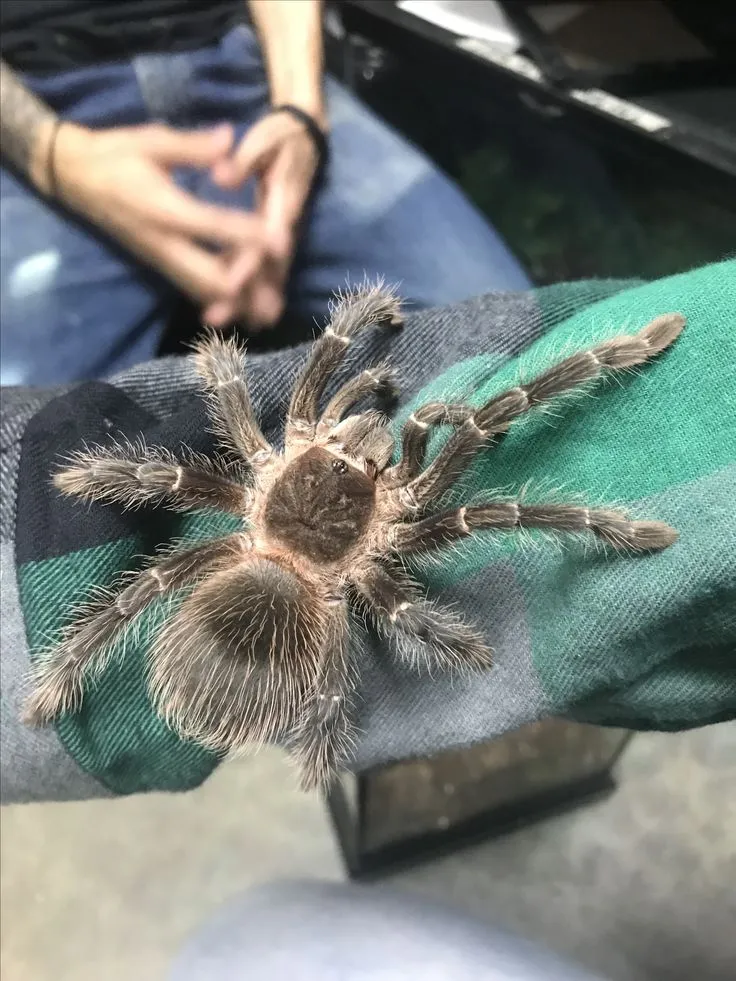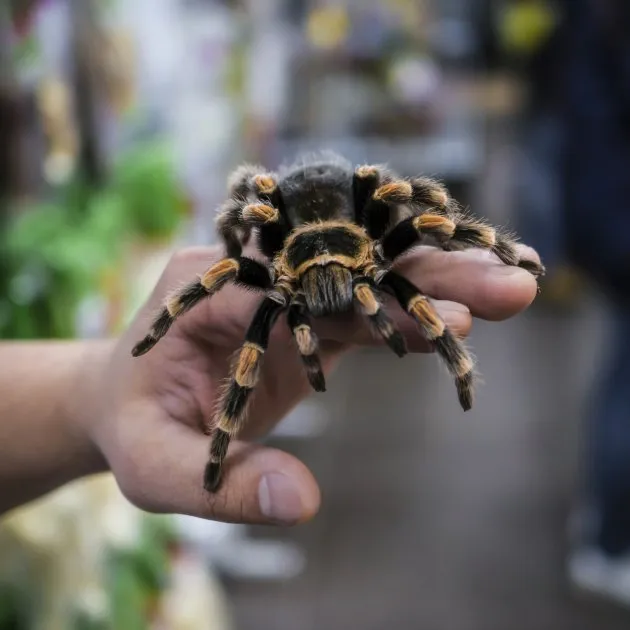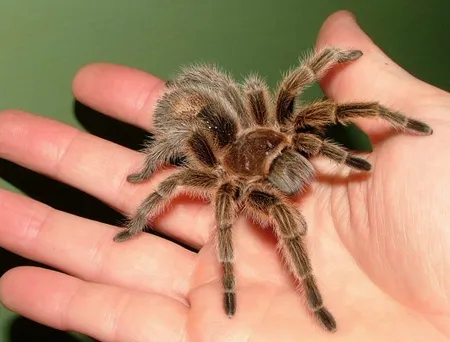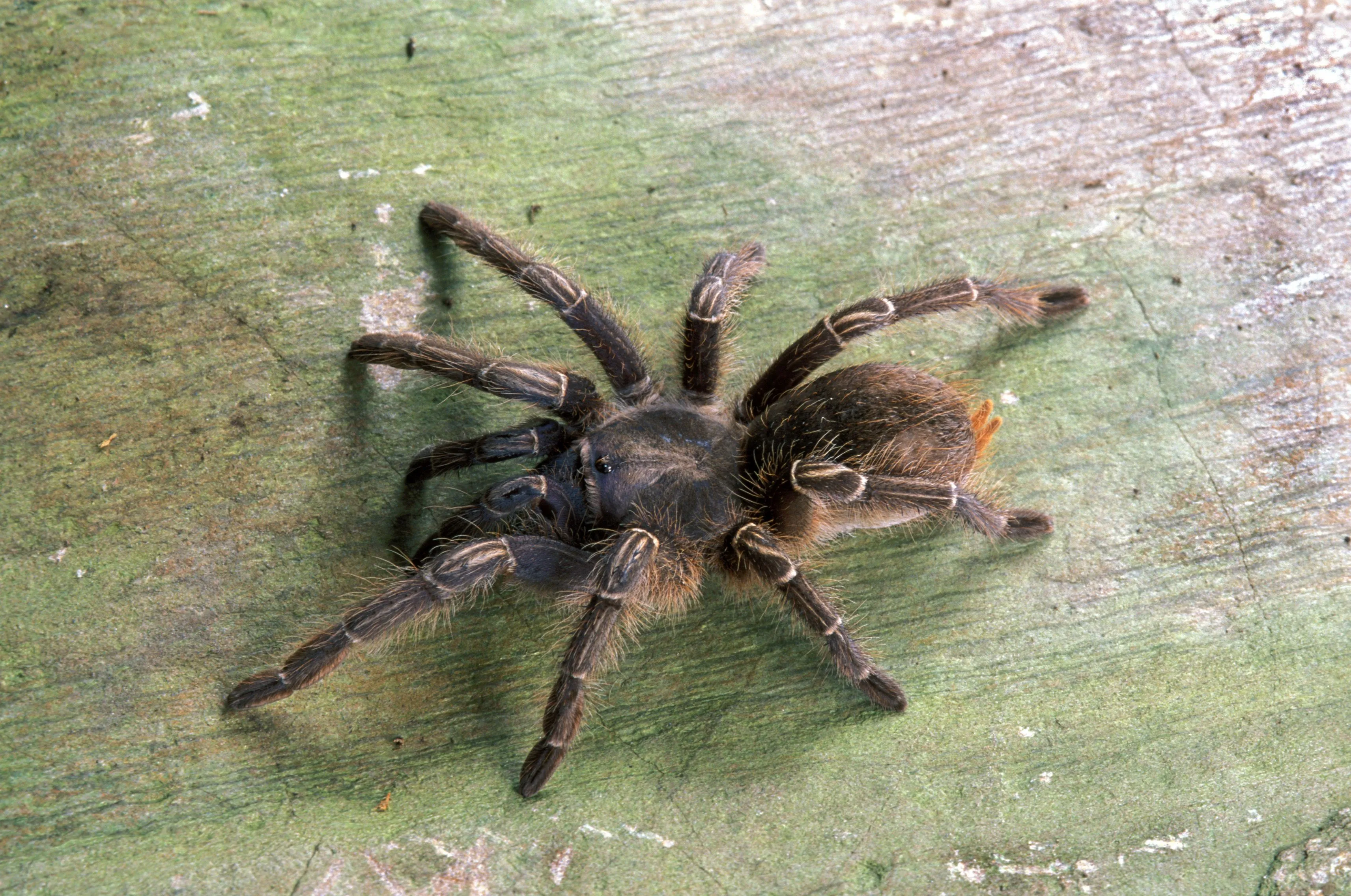Understanding Pet Tarantulas
Pet tarantulas have surged in popularity, captivating enthusiasts with their unique characteristics and relatively manageable care requirements. Before you embark on the journey of owning a tarantula, it’s essential to understand these fascinating creatures. They are arachnids, not insects, belonging to the Theraphosidae family. Known for their size and diverse appearances, tarantulas come in various species, each with unique traits, temperaments, and care needs. Learning about their natural habitats, behaviors, and lifecycles is crucial to providing them with a comfortable and enriching environment. This guide will walk you through everything you need to know about acquiring, caring for, and enjoying your pet tarantula.
Why Choose a Pet Tarantula
Choosing a pet is a significant decision, and the allure of a tarantula may surprise some. Tarantulas can be relatively low-maintenance pets compared to dogs or cats, requiring less interaction and space. Their care revolves primarily around providing a suitable enclosure, proper temperature and humidity, and regular feeding. They offer a unique and rewarding experience for those fascinated by the natural world. Many owners find tranquility in observing their tarantulas, watching them molt, hunt, and navigate their environment. The variety of species available also allows enthusiasts to collect and appreciate the different colors, sizes, and behaviors found in the tarantula world.
Benefits of Owning a Tarantula

Owning a tarantula comes with several advantages. They are generally quiet pets, making them ideal for apartments or homes where noise is a concern. Tarantulas don’t require walks or playtime, saving owners time and effort. Their care is relatively straightforward, involving feeding a few times a week and maintaining their habitat. Plus, they’re fascinating to observe, showcasing unique hunting techniques and molting processes. They don’t trigger common allergies, making them a good choice for people with sensitivities to fur or dander. The cost of upkeep is also generally lower than that of other pets, as food and habitat supplies can be budget-friendly.
Things to Consider Before Getting a Tarantula
Before bringing a tarantula home, you must consider several factors. Tarantulas are not cuddly pets and may bite if provoked. Their venom is generally not dangerous to humans but can cause local pain and discomfort. They require specialized enclosures, including appropriate substrate, temperature, and humidity levels. Research the specific needs of the species you’re considering, as care varies. You also need to be comfortable with feeding them live insects and handling them with care if necessary. Finally, be prepared for the possibility of your tarantula molting, a process that can take several weeks, during which they will be vulnerable and require minimal disturbance. Understand your local laws, as some species may be restricted.
Where to Find Your Pet Tarantula
Finding a tarantula involves more than just spotting one; it involves finding a healthy specimen from a reputable source. Your decision on where to buy your pet tarantula should be based on factors like the health of the animals, expertise of the sellers, and overall reliability of the source. Here’s a breakdown of the best places to find your future eight-legged friend.
Local Pet Stores

Local pet stores can be a convenient option for acquiring a tarantula. They often carry various species and can provide immediate access. Many pet stores have staff with some knowledge of tarantula care, and you can view the animal before purchase, assessing its health. They may also sell essential supplies, offering a one-stop shopping experience. However, not all pet stores specialize in exotic pets, so research is key.
Pros and Cons of Buying from Local Stores
The convenience of immediate access is a significant pro. You can often see the tarantula and ask questions before buying. On the downside, the staff may not always be experts in tarantula care, and the selection might be limited. The quality of the tarantulas and their enclosures can vary greatly between stores. Additionally, the prices in pet stores may be higher than those offered by breeders or online marketplaces.
Reputable Breeders
Reputable breeders often specialize in tarantulas, dedicating their time to breeding healthy specimens. They typically possess extensive knowledge about their animals and can provide valuable advice on care and handling. Breeders often focus on specific species, so you’ll find a more diverse selection of tarantulas. This direct contact can also reduce the risk of illness since you’re getting the tarantula directly from the source, and breeders are typically passionate about their animals.
Benefits of Buying from Breeders

Breeders offer several advantages. They have expert knowledge, offering detailed insights into the tarantulas’ lineage and care. You can often visit their facility and see the conditions the tarantulas live in. They are dedicated to the health and wellbeing of their animals. Breeders are usually more passionate and have a vested interest in the animal’s future well-being. They are typically more aware of the tarantula’s health, having better knowledge of the tarantula’s origin and genetics.
How to Find a Reputable Breeder
Finding a good breeder requires research. Look for breeders with positive reviews and recommendations from other hobbyists. Check if they are active in tarantula communities or forums. A reputable breeder will be transparent about their practices, answering questions and providing detailed information about their tarantulas. Ensure that they are not engaging in unethical breeding practices, like inbreeding. Observe the conditions of their facility, looking for clean enclosures, proper temperature, and humidity, and overall signs of healthy animals. Verify that they are knowledgeable and willing to provide ongoing support.
Online Tarantula Marketplaces
Online marketplaces provide access to a vast selection of tarantulas from various breeders and sellers. They may have competitive prices and are often convenient. You can often compare different species and sellers in one place. The reviews and ratings available can help assess the seller’s reputation and the quality of their animals. However, caution and diligent research are crucial when using online platforms to ensure a safe and healthy purchase.
Risks and Rewards of Online Purchases

The rewards include convenience and a wide variety of choices. You can often find rare species or specific color variations. The primary risk is the inability to physically inspect the tarantula before purchase. Ensure the seller has a good reputation, is communicative, and offers a guarantee. Shipping can be stressful for the tarantula, and you’ll need to be prepared to receive and care for the animal promptly. Consider the shipping costs, and make sure you’re buying from a seller who uses proper packaging to ensure the tarantula arrives safely.
Checking for Health and Quality
When purchasing a tarantula, whether online or in person, assess its health and quality. Look for a tarantula that is alert and active. Its abdomen should be plump, not shrunken, and it should have no signs of parasites or mites. Ensure it has all its legs and pedipalps. Observe the tarantula’s behavior. It should not appear lethargic or uncoordinated. Confirm the seller’s guarantee and return policy in case of any problems. Ask for photos or videos of the tarantula if you are purchasing online, and always ask for advice if you are unsure of anything.
Tarantula Shows and Expos
Tarantula shows and expos are excellent places to find tarantulas. These events bring together breeders, vendors, and hobbyists. You’ll find a vast selection of species and access to knowledgeable sellers. You can examine the tarantulas in person and ask questions before buying. It is a fantastic way to connect with other enthusiasts. These events often host educational talks and displays about tarantula care and species, providing a comprehensive learning experience.
What to Expect at a Tarantula Show

At a tarantula show, you can expect to see a diverse array of tarantula species for sale. Breeders and vendors will display their animals in enclosures. You can interact with them directly, inspect their health, and ask questions. Prices may vary, so it’s recommended to compare different sellers. You’ll also find related supplies like enclosures, substrate, and food. Many shows offer educational presentations and displays. Be prepared to handle potential crowds and plan to spend some time examining the tarantulas and talking with the breeders before making your decision.
Tips for Choosing a Healthy Tarantula
Choosing a healthy tarantula is vital to its longevity and your enjoyment. A healthy tarantula moves confidently, displays alertness, and has a plump abdomen. Inspect the animal closely. Look for any signs of parasites or mites. These are often visible as tiny dots or moving specs on the tarantula. Ensure all legs and pedipalps are present and not damaged. Observe its behavior. A healthy tarantula should appear active and responsive. Avoid tarantulas that are sluggish or seem uncoordinated. Check the enclosure conditions. Ensure the enclosure is clean, has the correct temperature and humidity, and is appropriate for the species.
Appearance and Behavior
A healthy tarantula’s appearance and behavior indicate its well-being. The abdomen should be full and not shrunken. This indicates that it is well-hydrated and has been feeding regularly. Look for a vibrant coloration that is typical of the species. Avoid tarantulas with dull or faded colors, as this could indicate health problems. Watch its movement. It should move smoothly and purposefully, not erratically or sluggishly. A healthy tarantula will exhibit typical behaviors such as defensive postures if threatened or active hunting behavior if food is present. Observe its posture and gait.
Signs of a Healthy Tarantula

Several signs indicate a healthy tarantula. Look for a shiny exoskeleton, especially after a molt. The legs should be complete and move freely. It should readily react to stimuli, showing a defensive posture if poked gently or actively seeking prey if food is offered. It should be feeding and drinking regularly. Examine its habitat. A clean, well-maintained enclosure, with appropriate humidity and temperature, indicates good care. Always inquire about the tarantula’s recent molting and feeding history. A healthy tarantula will also have clear eyes, and its fangs should be intact.
Avoiding Common Issues
To avoid problems, look for signs of illness or stress. Common issues include mites, which appear as small, moving dots on the tarantula or in its enclosure, and fungal infections, often visible as white or colored patches. Lethargy or lack of appetite can also indicate problems. Avoid tarantulas that show these signs. Proper care and habitat conditions are essential for preventing common issues. Research the specific needs of the tarantula species. Regularly monitor its health and behavior, and be prepared to consult a veterinarian or experienced tarantula keeper if you notice anything unusual. Preventative measures, like appropriate humidity levels and substrate, are crucial.
Preparing for Your New Pet
Preparing for a tarantula involves more than just finding one. It involves creating a suitable habitat and gathering the necessary supplies. It is vital for the tarantula’s well-being and your success as an owner. Researching the species you choose is crucial to provide the ideal environment. This section will cover what you should do before and after bringing your tarantula home.
Setting Up a Tarantula Enclosure
The enclosure is a tarantula’s home and should mimic its natural habitat. The size should be appropriate for the species and size of the tarantula. Select a well-ventilated enclosure made of glass or plastic. The substrate is the flooring of the enclosure. The type of substrate, such as coco fiber, peat moss, or vermiculite, must be chosen to maintain humidity and allow for burrowing. Add decorations such as cork bark, hides, and live plants to provide the tarantula with places to hide and feel secure. The enclosure should have a secure lid to prevent escape and be located in a stable environment away from direct sunlight and drafts.
Essential Equipment
Essential equipment for tarantula care includes a reliable thermometer and hygrometer to monitor the temperature and humidity levels. A water dish provides a source of fresh water, and the size should be appropriate for the tarantula. A heat source may be necessary for certain species, and a ceramic heat emitter or heat mat can be used to maintain the correct temperature. The enclosure should include a spray bottle for misting to maintain humidity levels. A pair of long tongs are essential for feeding and removing uneaten food. You’ll need a container for live insects and substrate to properly maintain the habitat.
Feeding and Caring for Your Tarantula
Feeding and caring for a tarantula involve providing a suitable diet, ensuring proper hydration, and maintaining its habitat. Tarantulas are relatively easy to care for, but attention to these details is essential for their health and well-being. Regular observation and proper handling are also essential components of care. This section will detail the best practices for feeding and caring for your tarantula.
Feeding Frequency and Types of Food
Feeding frequency varies depending on the tarantula’s age and species. Spiderlings need to be fed more often, typically every few days, while adult tarantulas may need to be fed every week or two. The primary food source for tarantulas is live insects. Crickets, mealworms, and roaches are common choices. The size of the prey should be appropriate for the tarantula. It shouldn’t be more significant than the tarantula’s body size. Remove any uneaten prey after 24 hours to prevent injury to the tarantula. Supplementing their diet with occasional treats, such as a small piece of pre-killed pinky mouse, can be offered for adult tarantulas, but do so sparingly.
Water and Humidity Requirements
Providing water is essential for tarantulas, especially in drier environments. Always provide a shallow water dish with fresh water. Some tarantulas, especially arboreal species, may drink from droplets. Mist the enclosure regularly to maintain the correct humidity level for the species. Humidity needs vary, but most tarantulas thrive in humidity levels between 60% and 80%. The humidity is maintained by misting, and the substrate can also help retain moisture. Keep an eye on the humidity levels. Use a hygrometer to monitor the conditions. Avoid overly humid conditions as it can lead to mold growth and health problems. Use the humidity level for the species you have selected.
Common Mistakes to Avoid
Avoid common mistakes to ensure your tarantula’s well-being. One of the most common errors is housing tarantulas in enclosures that are too large. This can make it difficult for them to find food and feel secure. Overhandling is another issue, as tarantulas are sensitive creatures. Avoid excessive handling unless necessary, and always handle them over a soft surface. Provide the incorrect humidity levels for the tarantula. Not providing the correct temperature or humidity is another mistake. Overfeeding is another problem, and it can lead to obesity and health issues. Avoid using harsh chemicals or cleaning products in the enclosure. These mistakes can have negative impacts on the health and well-being of your tarantula.
In conclusion, finding a pet tarantula involves understanding the needs of these fascinating creatures, researching reputable sources, and setting up a proper habitat. By choosing a healthy specimen from a reliable seller, providing suitable care, and avoiding common mistakes, you can enjoy a rewarding experience as a tarantula owner. Remember, patience, observation, and dedication are key to a happy and healthy pet tarantula. With proper care, your tarantula can provide years of fascination and enjoyment.
